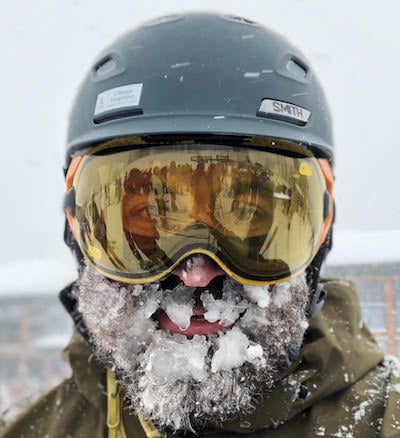News

By Luke Stone, Forecaster Posted 1 year ago November 30, 2023
Puget Sound Convergence Zone, Explained
The Puget Sound Convergence Zone (PSCZ) is a unique meteorological phenomenon that occurs in the state of Washington and can have particularly significant impacts on some of the ski resorts in the Cascades. This event results from the complex interplay between wind and topography, often bringing narrow bands of intense snowfall to Stevens and Snoqualmie Pass.
What is the Puget Sound Convergence Zone?
The Puget Sound Convergence Zone is a weather event that results from winds originating from opposite directions collide over the Puget Sound. This convergence is due to the topographical features of the region and is capable of producing narrow bands of intense snow that can yield deep snow over short periods of time.
Puget Sound Convergence Zones can form when the low-level winds off of the Pacific Ocean in Washington have a strong westerly component. Once the winds reach the western shore of Washington and the Olympic Mountains, the terrain forces airstreams over or around them. While some of the air does go over the mountains, much of it is forced to go around the Olympics either to the north or south.

Image: Winds approaching from the west forced around the Olympic Mountains and converge over the Puget Sound, leading to clouds and precipitation around Seattle and in the Cascades.
On the eastern side of the range, the Cascades prevent these airstreams from continuing to the east, forcing them to collide over the Puget Sound.
When these opposing airstreams meet, or converge, they have nowhere to go but up, leading to the formation of clouds and often precipitation. This leads to narrow bands of intense precipitation that often extend east into the Cascades. Intense snowfall rates are common during a Puget Sound Convergence Zone.
Where do Puget Sound Convergence Zones form?
While the convergence zone most frequently sets up on an east-west line that extends over the central and south Snohomish County area (north Seattle to Everett), it can go as far north as Northern Skagit County, and as far south as Northern Pierce County. The strength of the northerly or southerly component of the coastal winds determines the exact location.

(Image courtesy of https://www.americanmapstore.com/)
This narrow area of intense precipitation will often start in one area, and then shift either north or south, or both, during a single event, depending on the strength of the respective wind components.
The closeness of the Convergence Zone to the boundary between King and Snohomish Counties explains why cities just north or south of this line, which fall under the Olympic Mountains' rain shadow, have annual precipitation levels similar to Seattle. The influence of the Puget Sound Convergence Zone almost balances out the effect of the rain shadow. Without the Puget Sound Convergence Zone, cities like Edmonds and Lynnwood in Snohomish County, as well as Shoreline and Bothell in King County, would experience significantly less rainfall than Seattle.

Image: Northwest to southeast oriented Puget Sound Convergence zone that is initially stationary but begins to shift south as the northerly component of the wind increases.
A secondary, less intense convergence zone can sometimes form over the San Juan Islands, stretching between Victoria, British Columbia, and Bellingham, Washington. This occurs when southwesterly winds flowing from the Strait of Juan de Fuca intersect with northerly winds descending southward through the Strait of Georgia.

Image: Satellite image of two convergence zones in Washington in February 2021.
Summary
The Puget Sound Convergence Zone can have a significant impact on the lowland and mountain weather in Washington, with rapidly deteriorating conditions, deep low-elevation snow, and heavy mountain snowfall. This unique meteorological event highlights the complex interplay between topography and winds, creating exciting and challenging weather conditions in the state.
Luke Stone, Forecaster
About The Author




